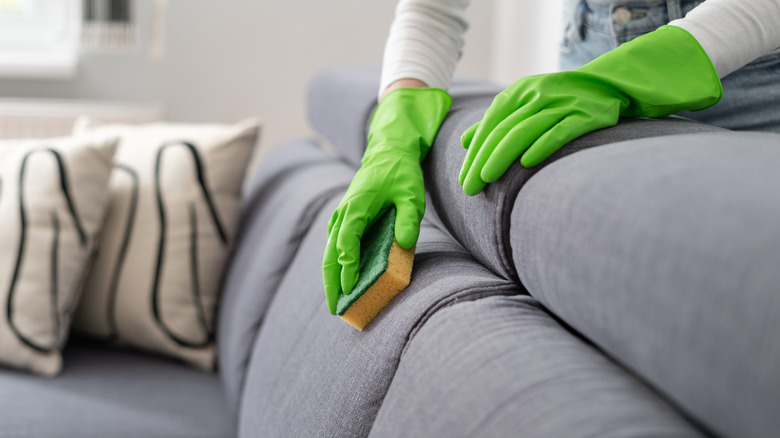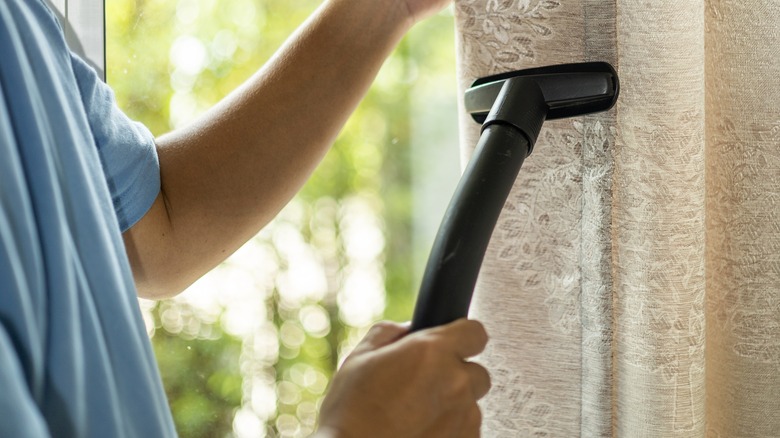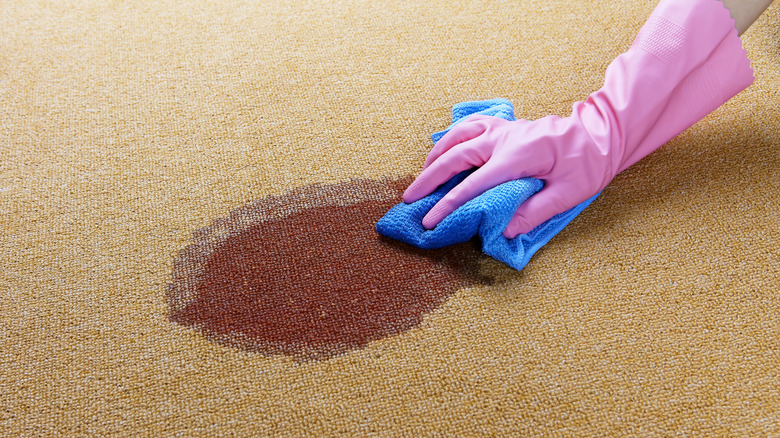What Is Dry Cleaning Solvent And How To Use It Safely
Dry cleaning, as the name suggests, cleans your clothes without water or the use of detergent and is often the only option for clothing and certain household fabrics made of delicate, less forgiving materials. Just as powder and liquid solvents have been used for professional dry cleaning for decades, some solvents will help you tackle select dry cleaning needs at home.
While dry cleaning solvent should not be your go-to solution for tackling stains on all of your clothing and upholstery due to its use of harsh and potentially dangerous chemicals, it can be used to occasionally treat stubborn stains on fabrics that are not as tolerant of traditional water-based cleaning methods, such as silk and wool.
Because the chemicals used in many dry cleaning solvents are extremely strong and toxic, they can pose a health and safety risk if not used correctly or if proper precautions are not taken. However, when used safely, relying on the proper dry cleaning solvent can be a good option for cleaning delicate fabrics that can't be thrown in the wash.
Using a dry cleaning solvent at home
Since the 1930s, Tetrachloroethylene (also known as perchloroethylene or PCE) has been the dominant chemical used most frequently in commercial and household dry cleaning solvents. Unfortunately, according to the CDC, PCE is carcinogenic, making long-term or improper exposure dangerous – especially for people who use these solvents daily in professional dry cleaning settings. While occasional at-home use for your most delicate fabrics won't pose as much of a threat as it would if you were exposed to these chemicals daily, it's important to note that they are still highly toxic, and many are also flammable. That said, though it's possible to treat your clothes and fabrics at home safely, it's best to leave the task to a professional dry cleaner if you aren't comfortable handling such strong chemicals.
Before applying any solvent to the area you want to clean, vacuum as much physical residue from the garment or upholstered fabric as possible to make the job easier. Then, whether you are using liquid or powdered solvent, apply a small amount to a sponge or microfiber cloth and gently blot an inconspicuous area for testing purposes. If it doesn't appear to harm the fabric, dab the cloth onto the stain until it's gone, starting with the outer edge. After the stain is gone, dab the area with a wet cloth and dry it with a different one. Then allow the spot to air dry completely before coming into contact with or using the fabric.
Safety precautions to take when using dry cleaning solvent
Because dry cleaning solvent is made of highly toxic chemicals and is far more flammable than everyday household cleaners, be mindful not to get any on your skin, eyes, or mouth during application. Wearing protective gear such as gloves, an N-95 respirator mask, and protective eyewear can prevent you from inadvertently coming into direct contact with the solvent. Applying the solution as sparingly as possible also helps you better control how much you are using and therefore having to come into contact with, and prevents you from introducing more toxic chemicals into your household than necessary.
Always ensure you are using dry cleaning solvent in a well-ventilated area, as inhaling the chemical vapors can harm your health. Because dry cleaning solvent is flammable, it's also essential to use it away from open flames or areas that have the potential to be the source of a spark, such as electric heaters, gas stoves, fireplaces, or pilot lights.
Because of the strong chemicals present in the solvent, it's also important to be cautious of how you store it so it isn't accidentally spilled or accessed by children or pets. Store your solvent in its original container so it is easily identifiable and not confused with something else in a potentially dangerous mixup. Don't store it near areas where sparks or open flames are possible.


